In 1922, British archaeologist Howard Carter, funded by Lord Carnarvon, discovered the nearly untouched tomb of Pharaoh Tutankhamun in Egypt’s Valley of the Kings. Defying beliefs that the tomb had been plundered, over 5,000 artifacts were found, including golden coffins and the famous death mask. Carter’s discovery ignited global Egyptomania and helped establish modern Egyptology. Though linked to a so-called Pharaoh’s Curse, after Carnarvon’s death, the myth was later debunked. Carter’s decade-long work revolutionized archaeology and revealed profound insights into ancient royal burial practices. Today, the tomb’s treasures remain a lasting legacy in Cairo.
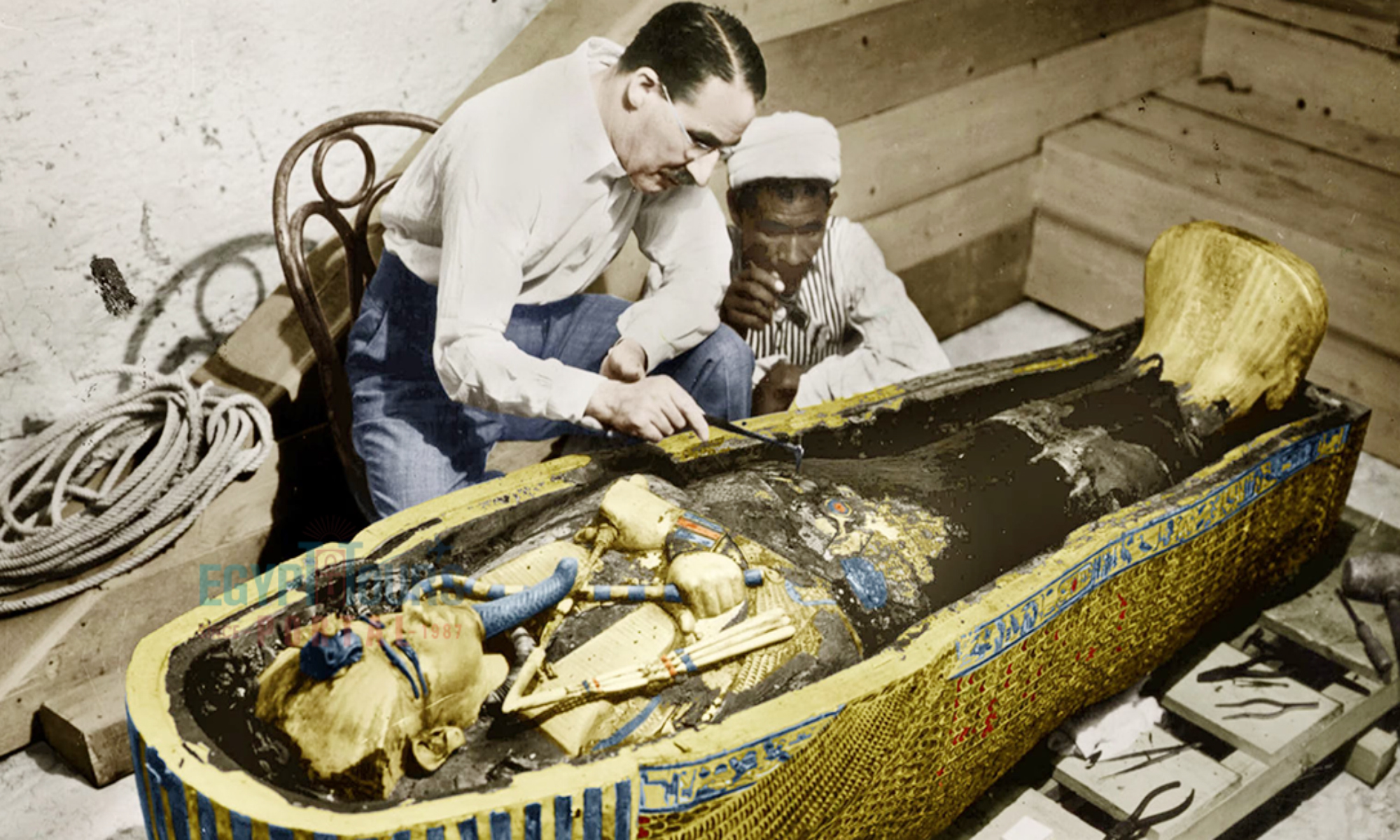
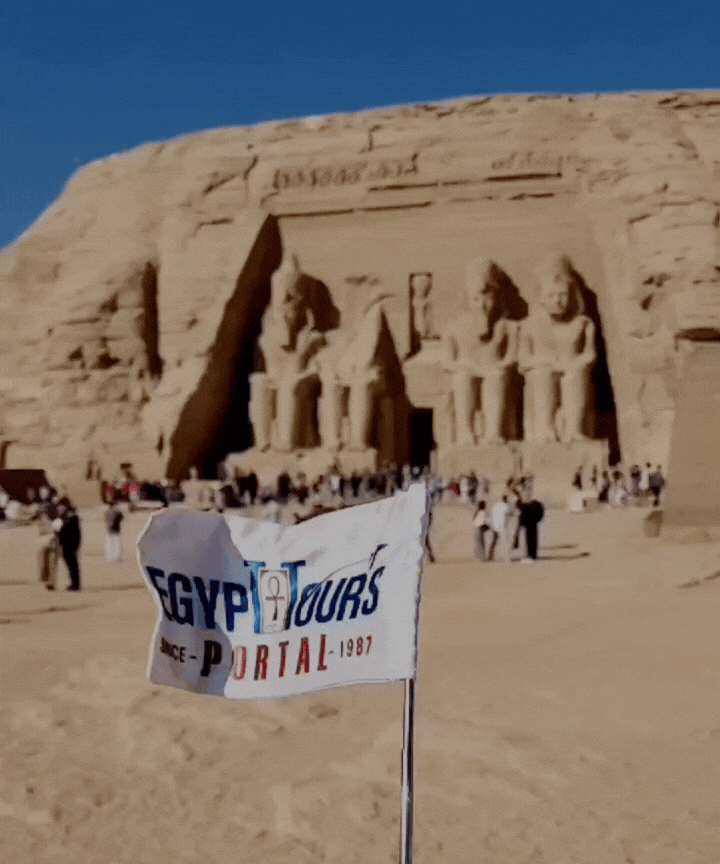
The discovery of Tutankhamun's tomb is one of the most significant events in the history of the modern world, which gave rise to the creation of an entire field of study called Egyptology. In the year 1914, a relationship between a gifted Egyptologist & archaeologist by the name Howard Carter and the 5th Earl of Carnarvon led to the most famous archaeological discovery of all time "King Tutankhamun Tomb Discovery".
In that year, Lord Carnarvon hired Carter to discover the tomb of an ancient young pharaoh of the glorious 18th dynasty named king Tutankhamen. Lord Carnarvon spent many seasons after season trying to find the tomb, but was not successful. That's why he hired Carter, because he supervised excavations Hatshepsut temple in Luxor and his usage of modern methods of archaeology and recording for one final season, as he was getting old and running out of hope.

Carter’s most famous achievement came in 1907 when he partnered with a wealthy British aristocrat, Lord Carnarvon, who financed archaeological digs in the Valley of the Kings. Carter was convinced that despite extensive excavations in the area, the tomb of the relatively obscure Pharaoh Tutankhamun had not been found. Carter searched the Valley of the Kings for over a decade, digging in areas others had overlooked.
Lord Carnarvon grew impatient, but Carter persuaded him to fund one final excavation season in 1922. On November 4 of the same year, Carter and his team discovered a staircase leading to a sealed doorway, bearing the name of Tutankhamun. After opening the tomb, they found it almost completely intact, a rarity in Egyptian archaeology, where most tombs had been plundered long ago. On November 26, 1922, Carter made a small hole in the tomb’s sealed doorway and peered inside by candlelight. He saw gold and glimmering objects everywhere.
When asked if he could see anything, Carter famously responded in the famous lines, "Yes, wonderful things". The discovery of Tutankhamun’s tomb not only changed the course of Carter’s life but also revolutionized Egyptology. He spent several years cataloging and carefully excavating the tomb’s treasures. Carter continued to work in Egypt after the tomb’s discovery but eventually retired to England.
He died in 1939 at the age of 64, never having fully received the recognition he deserved during his lifetime, though his contribution to Egyptology remains monumental. His house in the Valley of the Kings was transformed into a museum where everyone can explore the tools and his aura that surround this mythical place of immortal treasures.
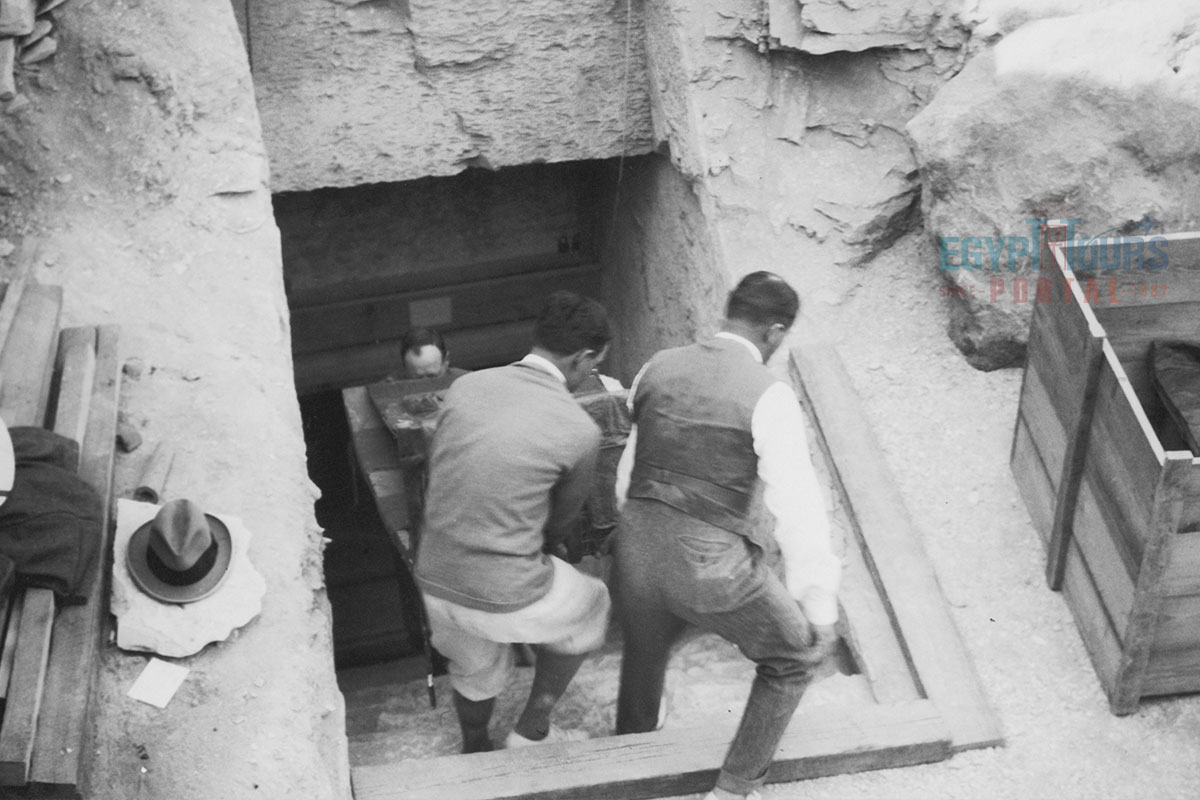
Both of them were truly chasing a dream as the general theory was that the tomb was discovered by American Egyptologist Theodore Davis in 1905, but only a small cache of gold fossils carried Tut's name was found and his mummy wasn’t, so everyone believed that his treasures were stolen and lost forever. But they believed the tomb of Tutankhamen is not lost but simply forgotten, and it’s their destiny to remind the world once again.
The final search began in the Valley of the Kings on November 1, 1922 and by the grace of God, on November 4, 1922, Three days later while systematically investigating a line of huts, the young water boy stumbled on a stone that appeared to be the top of a flight of steps cut into the bedrock so after clearing the debris and a slow a careful excavation of the sunken staircase leading to a mud-plastered doorway which carried the royal seals of King Tut.
On 22 November 1922, a small breach was made to the left corner of the doorway, and Carter was able to insert the light of a candle, and Carnarvon asked, “Can you see anything?” to which Carter replied, “Yes, Wonderful Things”. One of these wonderful things was the tomb of King Tutankhamun, the most preserved and intact tomb in the history of ancient Egyptian civilization, which was opened for the first time in modern history on 16 February 1923.
About 5.398 items were found, which Carter took 10 years to document, like Tut’s famous golden face mask, his dagger, which was made from a meteorite, archery bow, golden chariot, and many more majestic items located at the Egyptian Museum in Cairo. The discovery was covered by the world’s media & press that captured the attention of everyone around the planet during that Era and gave rise to Egyptomania worldwide.

The "Curse of the Pharaoh" is a powerful and widespread mix of ancient belief, modern superstition, and media sensationalism. The public seemed to pay more attention to the concept that states that anyone who disturbs the final rest of the Pharaoh shall meet his demise, as Lord Carnarvon died 5 months after the discovery, which led to many supernatural speculations.
Sir Arthur Conan Doyle, the creator of Sherlock Holmes and a believer in the supernatural, speculated publicly that Carnarvon's death had been caused by "elementals" or spirits protecting the tomb. But out of the 58 people who were present, only eight died within a dozen of years, and the rest lives very peaceful life lives like Howard Carter, who passed away at the age of 64 in 1939, and Carnarvon’s daughter, who was present at the tomb’s opening, lived until 1980.
While some deaths associated with the tomb’s discovery were indeed mysterious, most can be explained by natural causes, coincidence, and the harsh realities of early 20th-century life in Egypt. Several researchers have offered rational explanations for the deaths and illnesses following the discovery of Tutankhamun's tomb, which include Harmful microorganisms, like dangerous fungi (Aspergillus), that may have been present in the sealed tomb and caused respiratory infections.
Traces of radioactive matter may have been found around the tombs which with time of direct or even indirect exposure, can cause tumors. The stress of excavation, difficult living conditions, and the statistical probability of illness or death among a large group may explain the misfortunes.
Psychological effects, such as paranoia or stress linked to the belief in the curse, may have caused people to attribute their illnesses to it. The curse remains one of the most enduring and captivating stories of modern archaeology, blending the wonder of ancient Egypt with the timeless human fascination with the supernatural.
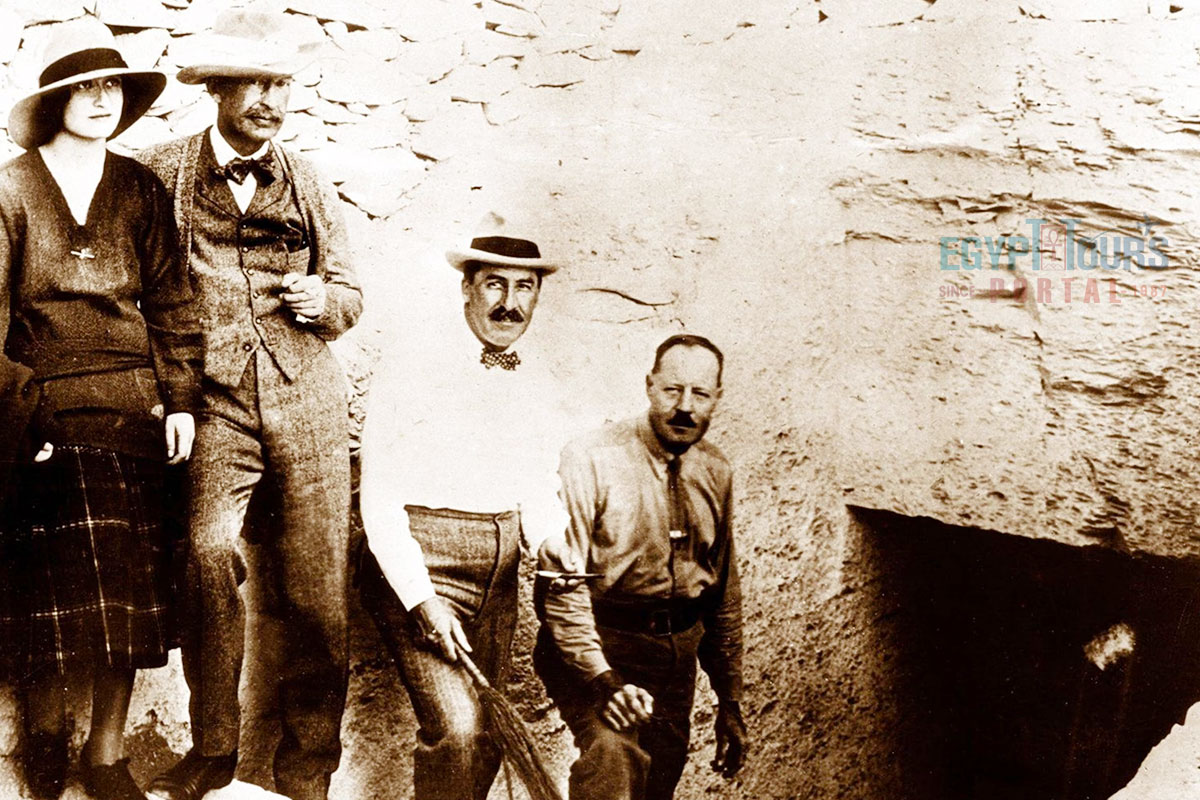
Howard Carter (1874–1939) was a British archaeologist and Egyptologist who became world-famous for discovering the tomb of the young Pharaoh Tutankhamun in 1922. Here’s an in-depth look at his life and career:
Carter was born in Kensington, London, to an artistic family. His father, Samuel Carter, was an illustrator, which likely influenced Carter’s early talent for drawing. At just 17 years old, he moved to Egypt to assist Percy Newberry in documenting tombs with his drawing skills. His exceptional attention to detail led to a quick rise in the field of archaeology.
He began his archaeological career working at the site of Beni Hasan, where he helped document ancient Egyptian tombs in the Middle Kingdom. His skill in copying and preserving ancient Egyptian art made him a valuable asset to archaeologists. Around 1899, Carter became the first inspector of antiquities for Upper Egypt.
He worked on several significant sites, including Luxor and Thebes. Carter’s career took a hit around 1905 when a conflict between Egyptian guards and French tourists led to his resignation from the Antiquities Service. Carter struggled financially during this time, working as a sketch artist and restorer.
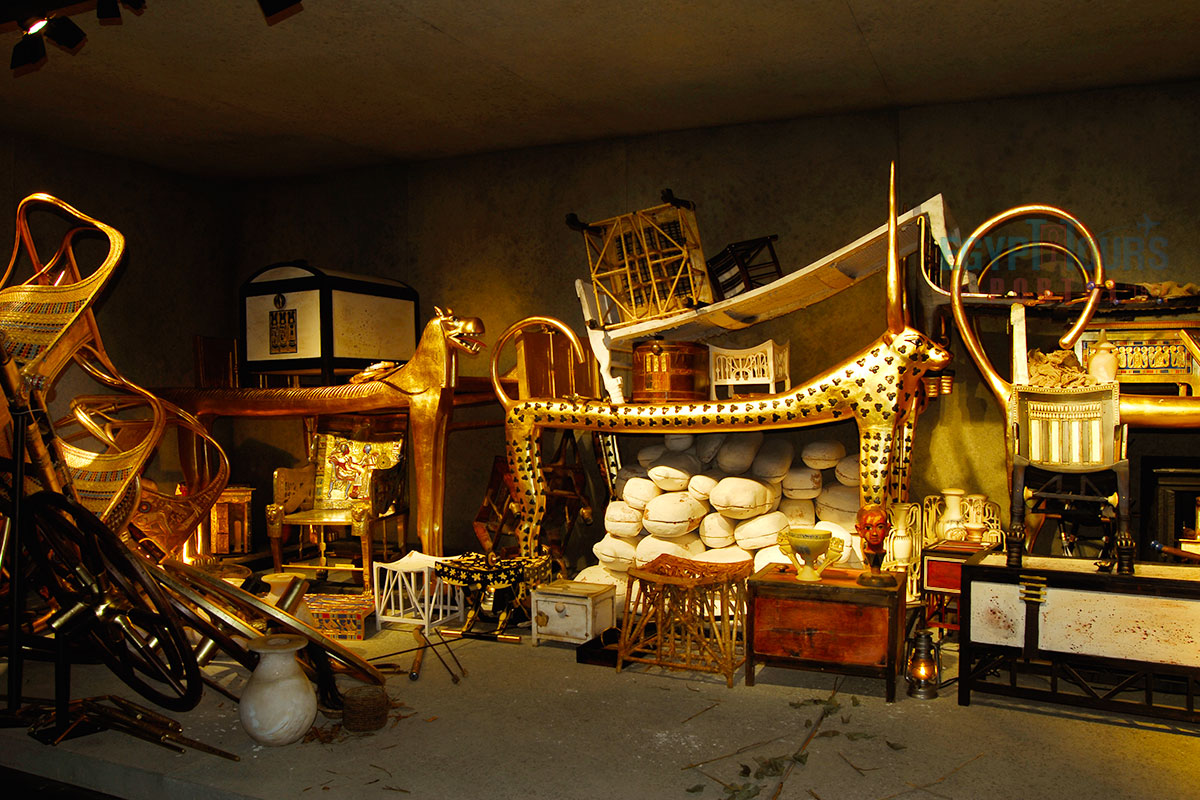
When Howard Carter opened the tomb of Tutankhamun in 1922, he discovered one of the most incredible collections of ancient treasures ever found, which took years to excavate and catalog. Tutankhamun's tomb contained over 5,000 objects, each one a masterpiece of ancient craftsmanship, preserved remarkably well due to the tomb’s largely undisturbed state.
Ancient Egyptians believed that a well-equipped tomb was essential for ensuring the pharaoh’s successful journey into the afterlife. The ancient Egyptian gold, jewels, and intricate craftsmanship were meant to provide the king with both material luxury and spiritual protection. Some of the major Treasures discovered in the tomb include:
The Golden Coffin and Death Mask are by far the most famous artifacts found his his legendary tomb. The solid gold funerary mask of Tutankhamun, weighing 10 kg (22 pounds), portrays the young pharaoh in idealized form, with inlaid lapis lazuli, quartz, obsidian, and glass. The mask served to preserve the identity of the king in the afterlife. Tutankhamun's mummified body was placed inside three nested coffins, with the innermost made of solid gold, weighing around 110 kg (240 pounds).
Tutankhamun’s tomb contained many pieces of royal furniture, including thrones, chairs, chests, and beds. His golden throne is one of the standout items, featuring exquisite inlays and carvings that depict Tutankhamun and his queen, Ankhesenamun. Several beds with animal-headed designs were meant to provide comfort in the afterlife, while six dismantled chariots, some of which were highly decorated with gold leaf, suggested the pharaoh would have been ready for transport in both the physical and spiritual realms.
The tomb contained a vast collection of jewelry, including pectorals, rings, bracelets, and amulets, many made of gold and adorned with semi-precious stones like turquoise and lapis lazuli. These were believed to protect the king and provide magical power in the afterlife.
Numerous statues of ancient Egyptian deities and ancient Egyptian symbols of power were found in the tomb, including representations of Osiris, Horus, Hathor, Ibis, and the protective deities Isis and Nephthys. These were designed to ensure Tutankhamun’s safe passage to the afterlife and protection from evil forces. Statues of the young king himself, in various poses of divine reverence or battle readiness, were placed strategically within the tomb.
Tutankhamun’s tomb contained daggers (one famously made of meteoric iron a.k.a the meteor dagger), bows, quivers, and shields. These items reflected his royal and warrior status and were likely placed with him to provide protection and defense in the afterlife.
Canopic jars were discovered in the tomb, designed to hold the pharaoh’s internal organs under the protection of the four sons of Horus. These jars were exquisitely carved, with stoppers shaped like the head of the king. They were housed in a gold shrine surrounded by protective figures.
The tomb also held containers of wine, oils, perfumes, and foods that were meant to sustain the king’s spirit in the afterlife. Everyday items like combs, mirrors, and even a pair of sandals were found, reinforcing the belief that the afterlife mirrored life on Earth.
One of the most important religious artifacts was the life-sized black figure of Anubis, the jackal-headed god of mummification and the afterlife, which was discovered near the entrance to the burial chamber.
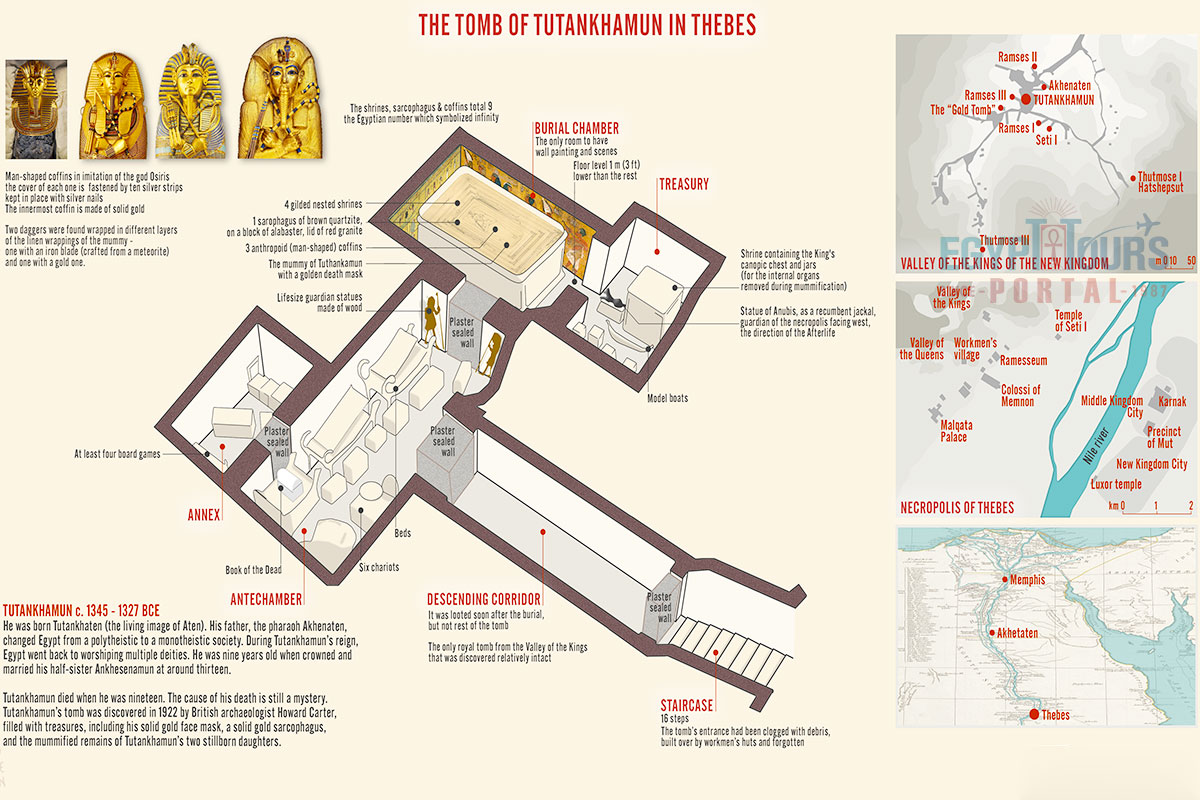
Tutankhamun’s tomb (KV62) is located in the Valley of the Kings and consists of a relatively small series of chambers compared to other pharaonic tombs. Despite being modest in size and layout compared to other royal tombs in the Valley of the Kings, Tutankhamun’s tomb is loaded with thousands of unimaginable riches that provided remarkable insights into the wealth, artistry, and religious beliefs of ancient Egypt’s New Kingdom period.
The walls’ artwork, the positioning of the objects, and the preservation of the items allowed Egyptologists to study ancient Egyptian burial practices with unprecedented detail, which revealed some of the greatest collections of details and stories. The tomb is structured into four primary rooms:
This long, sloping corridor led down to the tomb’s antechambers. When Carter first entered, the corridor was filled with rubble, placed there likely as a form of protection against grave robbers.
The first large room encountered upon entering the tomb, the antechamber, was filled with an assortment of objects, including ancient Egyptian furniture, ancient Egyptian chariots, and statues. Notably, some items were found in disarray, suggesting that tomb robbers had rummaged through the room but had not gotten far into the tomb. Two black-painted statues of the king stood on either side of the entrance to the burial chamber, symbolizing his guardianship over the tomb and the afterlife.
The heart of the tomb, this room contained Tutankhamun’s sarcophagus and nested coffins. The walls of the burial chamber were adorned with frescoes that depicted the pharaoh’s journey into the afterlife and interactions with deities like Osiris and Nut.
The Egyptian sarcophagi contained three nested coffins, with the innermost made of solid gold, housing the mummified body of the king. The famous golden death mask was placed directly on his mummy’s face.
Discover the incredible coffins of the ancient Egyptian civilization
Read MoreThe treasury contained some of the most valuable items, including the canopic shrine that held the pharaoh’s organs and representations of protective gods and goddesses. There was also a large gilded shrine that housed Tutankhamun’s internal organs, protected by the four goddesses Isis, Nephthys, Neith, and Selket. Numerous statues of gods, as well as a large gilded statue of Anubis, the god of the afterlife, were found here, symbolizing the protection of the king’s spirit.
A small side chamber, the annex was filled with everyday items such as foodstuffs, pottery, oils, and games, which were meant to accompany the king into eternity.
Egypt holds an amazing collection of artifacts and monuments that belong to King Tutankhamun and Many other great kings in the magical cities Cairo, Alexandria, Luxor, and Aswan, and there is a chance for you to witness all of them with our magical Nile River cruise and Egypt tours.
Private 4 Days Cairo Tour Packages for UAE Travelers 4 days Cairo Egypt Tour package...
Tour Location: Cairo – Giza...
5 Days Cairo and Alexandria Tour Package For UAE Travelers 5 days Cairo and Alexandr...
Tour Location: Cairo/Giza/Alexandria...
6 Days Cairo, Luxor & Aswan Tour Package For UAE Travelers 6 days Cairo, Luxor &...
Tour Location: Cairo/Giza/Aswan/Luxor...
Amazing 7 Days Cairo and Hurghada Holiday for UAE Travelers 7 Days Cairo & Hurgh...
Tour Location: Cairo – Giza – Hurgh...
The Valley of the Kings was known to be a royal necropolis filled with unimaginable riches, having been the burial site for many pharaohs and their families of the New Kingdom (1550 - 1070 BC). Ancient texts and inscriptions, such as the Ramesseum Papyrus, hinted at the existence of a pharaoh named Tutankhamun. Carter’s work was fueled by the research of his patron, Lord Carnarvon, and the discoveries of previous archaeologists like Theodore Davis, who excavated in the Valley of the Kings but declared the area "exhausted" after several small finds. He based his search on gaps in the known tomb layout of the Valley of the Kings and specific clues, such as artifacts bearing Tutankhamun's name that had surfaced elsewhere,e that indicated his tomb had not yet been found.
Despite being the most intact royal tomb ever discovered, Tutankhamun’s tomb had suffered from theft. Archaeological evidence shows that looters likely broke into the tomb during his time shortly after the pharaoh’s burial. Howard Carter himself identified two separate instances of looting, as evidenced by the disturbed state of the tomb's outermost layers and certain items out of place.
Most of what was stolen consisted of small, easily transportable objects like oils, perfumes, jewelry, golden objects, and precious metals. These thefts seemed more opportunistic than extensive, as the thieves did not reach the tomb's innermost chambers or its most significant treasures. Fortunately, much of the lavish wealth, including Tutankhamun’s famous golden death mask, was still intact when Carter discovered the tomb in 1922.
Theories surrounding Tutankhamun’s life, death, and the significance of his tomb have evolved considerably since his discovery. he was viewed as a minor and relatively insignificant ruler, as his reign was short and he ascended the throne at a young age. During excavations in the Valley of the Kings, many facts and secrets were revealed about the Pharaoh which led to his discovery.
Modern forensic analysis, including CT scans, has since disproved this theory that he had been murdered due to suspicious skull fractures. Current evidence suggests he may have died from complications related to a leg fracture, malaria, or congenital health plus a genetic disorder due to inbreeding, as his family practiced incestuous marriages.
The perception of Tutankhamun’s reign has also changed from an insignificant "boy king" to a wise king due to modern research highlighting his restoration of traditional Egyptian religion and governance after the radical monotheistic reforms of his father, Akhenaten.
The Curse of the Pharaohs, linked to the discovery of Tutankhamun’s tomb, arose after the deaths of some people involved in the excavation, including Lord Carnarvon. Though now debunked as a coincidence, this curse mythology captivated the public in the 1920s and remains a part of pop culture.
Tutankhamun’s tomb was still richly decorated and filled with treasures, though not as large or grand as those of other pharaohs. Its magnificence is due to it being found completely complete, filled with luxurious goods, as it was believed these would accompany him in the afterlife. Egyptians believed that pharaohs were divine and would need material wealth to continue their roles as gods in the afterlife.
The tomb’s contents included weapons, chariots, furniture, and statues, which were symbolic of his status and necessary provisions for the afterlife journey. It’s also believed that his death may have been unexpected, which left his successors scrambling to prepare a royal burial. Some scholars suggest that Tutankhamun’s tomb was initially meant for someone else, perhaps a lesser noble, but was hastily repurposed for him due to time constraints, which caused his tomb to be hidden from the public eye by mere chance.
Black cumin seeds (Nigella sativa) were found in Tutankhamun's tomb, likely due to their perceived medicinal and spiritual significance. black cumin seeds were highly valued for their healing properties and were often used as a remedy for anti-inflammatory, antioxidant, and antimicrobial properties. They may have been used to treat a variety of ailments, including respiratory problems, digestive disorders, and skin conditions.
Egyptians believed in the seeds’ symbolic and magical power in the mortal realm and the afterlife. Including black cumin seeds in Tutankhamun’s tomb might indicate their intended role in providing protection or promoting health during his journey in the afterlife. They may have also been included as part of the sustenance or offerings required to maintain the pharaoh in the afterlife, according to the religious and cultural practices of ancient Egypt. Their presence highlights the richness of the medical knowledge and spiritual traditions of the Ancient Egyptians that were integrated into burial practices during this period.
The entire country of Egypt deserve to be explored with its every heavenly detail but there are places that must be seen before any other such as the breathtaking Hurghada's red sea, The wonders of Cairo the pyramids of Giza, the great sphinx, the Egyptian Museum, Khan El Khalili Bazaar, the wonders of Luxor like Valley of the Kings, Karnak & Hatshepsut temple and the wonders of Aswan such as Abu Simbel temples, Philea temple, Unfinished obelisk and The Wonders of Alexandria like Qaitbat Citadel, Pompey's Pillar and Alexandria Library. Read more about the best places to visit in Egypt.
If you want to apply for a Visa On Arrival that lasts for 30 days then you should be one of the eligible countries, have a valid passport with at least 6 months remaining and pay 25$ USD in cash, as for the E-Visa for 30 day you should have a valid passport for at least 8 months, complete the online application, pay the e-visa fee then print the e-visa to later be presented to the airport border guard. You could also be one of the lucky ones who can obtain a free visa for 90 days. Read more about Egypt travel visa.
Egypt has a variety of delicious cuisines but we recommend “Ful & Ta’meya (Fava Beans and Falafel)”, Mulukhiya, “Koshary”, a traditional Egyptian pasta dish, and Kebab & Kofta, the Egyptian traditional meat dish.
The best time to travel to Egypt is during the winter from September to April as the climate becomes a little tropical accompanied by a magical atmosphere of warm weather with a winter breeze. You will be notified in the week of your trip if the Climate is unsafe and if any changes have been made.
You should pack everything you could ever need in a small bag so you could move easily between your destinations.
We have been creating the finest vacations for more than 20 years around the most majestic destinations in Egypt. Our staff consists of the best operators, guides and drivers who dedicate all of their time & effort to make you have the perfect vacation. All of our tours are customized by Travel, Financial & Time consultants to fit your every possible need during your vacation. It doesn't go without saying that your safety and comfort are our main priority and all of our resources will be directed to provide the finest atmosphere until you return home.
You will feel safe in Egypt as the current atmosphere of the country is quite peaceful after the government took powerful measures like restructuring the entire tourist police to include all the important and tourist attractions in Egypt. Read more about is it safe to travel to Egypt.
Wear whatever feels right and comfortable. It is advised to wear something light and comfortable footwear like a closed-toe shoe to sustain the terrain of Egypt. Put on sun block during your time in Egypt in the summer to protect yourself from the sun.
The best activity is by far boarding a Nile Cruise between Luxor and Aswan or Vise Versa. Witness the beauty of Egypt from a hot balloon or a plane and try all the delicious Egyptian cuisines and drinks plus shopping in old Cairo. Explore the allure and wonders of the red sea in the magical city resorts of Egypt like Hurghada and many more by diving and snorkeling in the marine life or Hurghada. Behold the mesmerizing western desert by a safari trip under the heavenly Egyptian skies.
There are a lot of public holidays in Egypt too many to count either religious or nation, the most important festivals are the holy month of Ramadan which ends with Eid Al Fitr, Christmas and new years eve. Read more about festivals & publich holidays in Egypt.
Egypt is considered to be one of the most liberal Islamic countries but it has become a little bit conservative in the last couple of decades so it is advised to avoid showing your chest, shoulders or legs below the knees.
Arabic is the official language and Most Egyptians, who live in the cities, speak or understand English or at least some English words or phrases. Fewer Egyptians can speak French, Italian, Spanish, and German. Professional tour guides, who work in the tourism sector, are equipped to handle visitors who cannot speak Arabic and they will speak enough English and other languages to fulfill the needs of all our clients.
The fastest way is a car, of course, a taxi. If you are in Cairo ride a white taxi to move faster or you could board the fastest way of transportation in Egypt metro if the roads are in rush hour.
The temperature in Egypt ranges from 37c to 14 c. Summer in Egypt is somehow hot but sometimes it becomes cold at night and winter is cool and mild. The average of low temperatures vary from 9.5 °C in the wintertime to 23 °C in the summertime and the average high temperatures vary from 17 °C in the wintertime to 32 °C in the summertime. The temperature is moderate all along the coasts.
It is the home of everything a traveler might be looking for from amazing historical sites dating to more than 4000 years to enchanting city resorts & beaches. You will live the vacation you deserve as Egypt has everything you could possibly imagine.









